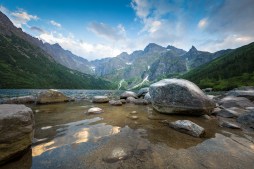Exploring the Origins: A Comprehensive History of National Parks in America
The national parks of America are a treasure trove of natural beauty and cultural significance, offering a glimpse into the country’s rich history. From majestic mountains to serene lakes, these protected areas reflect the diverse landscapes and ecosystems that make up the United States. In this article, we will explore the origins and evolution of national parks in America, tracing their journey from concept to creation and beyond.
The Concept of Conservation
The idea of protecting natural spaces began taking shape in the mid-19th century as industrialization rapidly transformed America’s landscape. The growing awareness of environmental degradation led thinkers like Henry David Thoreau and John Muir to advocate for conservation. Muir’s writings about Yosemite were instrumental in raising public interest in preserving nature, paving the way for future national parks.

Yellowstone: The First National Park
On March 1, 1872, Yellowstone National Park was established as the first national park in the world. This groundbreaking decision marked a significant shift toward formalized conservation efforts. Yellowstone was created to protect its unique geothermal features and diverse wildlife, serving as a model for future parks by demonstrating that land could be set aside for public enjoyment and ecological preservation.
The Role of Legislation
Following Yellowstone’s establishment, further legislation was needed to sustain the burgeoning national park movement. The Antiquities Act of 1906 played a crucial role by allowing presidents to designate national monuments without congressional approval. This act facilitated the protection of culturally significant sites such as Mesa Verde National Park while also expanding existing parks across the nation.
The Growth of the National Park System
Throughout the early 20th century, more parks emerged as Americans sought refuge from urban environments. Notable additions included Grand Canyon (1919) and Great Smoky Mountains (1934), both appealing destinations for tourism and recreation. By 1966, Congress established a comprehensive system through legislation that recognized not only traditional parks but also historical sites, scenic rivers, and trails—the backbone of what we now know as America’s national park system.
Preserving Nature for Future Generations
Today’s national parks face challenges such as climate change and increased visitation pressures; however, they continue to serve their fundamental purpose: conserving natural resources while providing recreational opportunities for all Americans. Efforts are ongoing to enhance visitor experiences while ensuring that these cherished landscapes remain intact for future generations to enjoy.
In conclusion, exploring the history of national parks reveals an enduring commitment to conservation that has shaped our relationship with nature over time. As you plan your next adventure into these stunning landscapes, remember their rich heritage—one forged through advocacy, dedication, and an unwavering belief in preserving our planet’s beauty.
This text was generated using a large language model, and select text has been reviewed and moderated for purposes such as readability.


